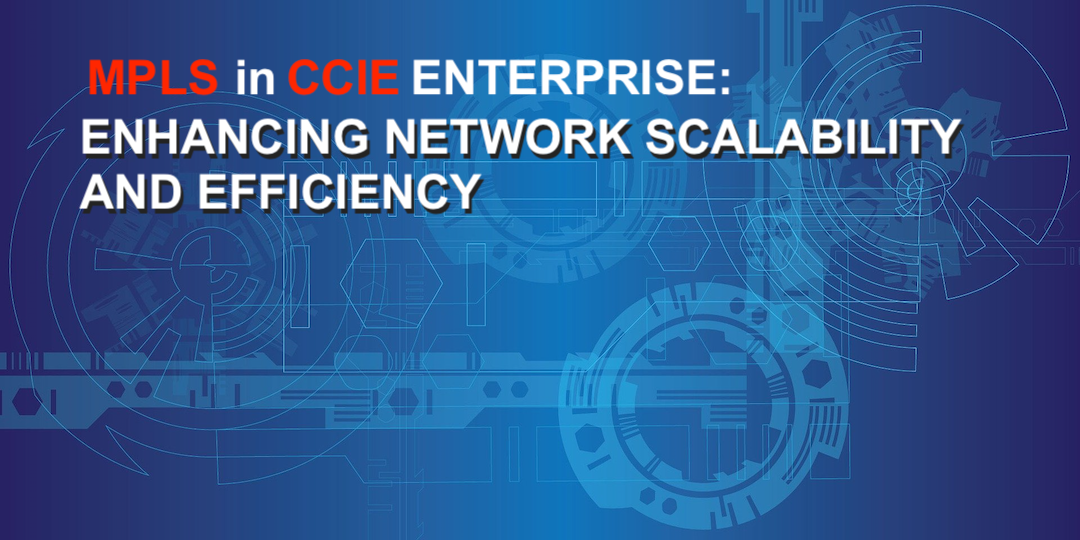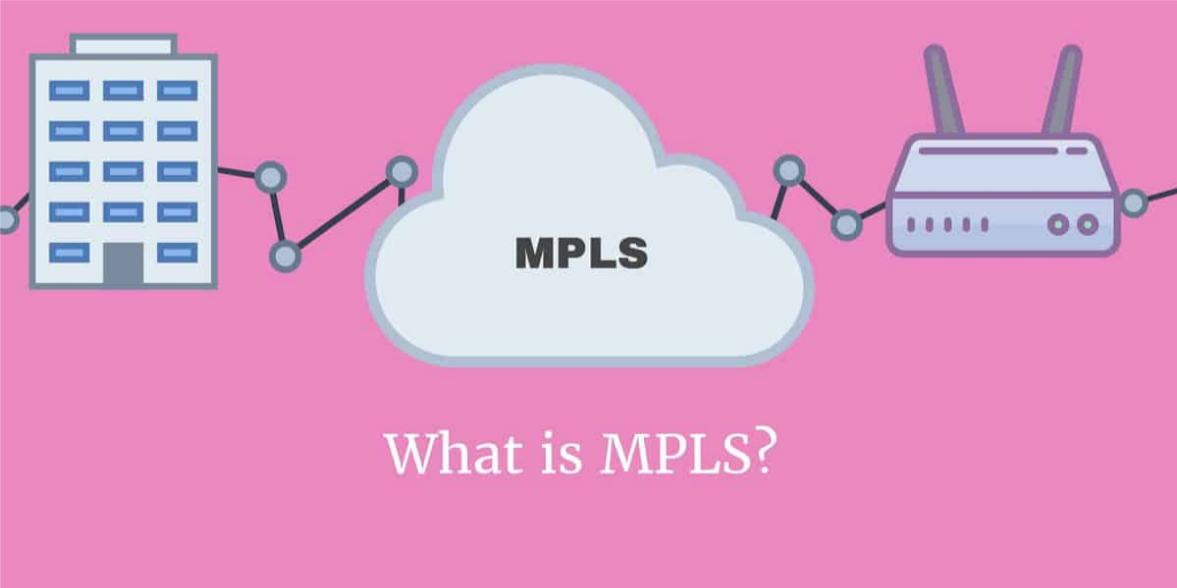
Welcome to the universe of CCIE Undertaking, where network adaptability and proficiency rule! In this speedy advanced period, organizations are continually looking for ways of improving their organizations for consistent network and upgraded execution. That is where Multiprotocol Name Exchanging (MPLS) steps in as a distinct advantage. MPLS has become an integral part of CCIE Enterprise, offering a plethora of benefits that can revolutionize your network infrastructure. So buckle up and get ready to dive into the fascinating world of MPLS.
What is MPLS and why is it important in CCIE Enterprise?
In the vast realm of networking, MPLS stands tall as a powerful technology that enables efficient data transmission across networks. But what exactly is MPLS? At its center, MPLS (Multiprotocol Mark Exchanging) is a procedure used to coordinate organization traffic along foreordained ways by doling out names to parcels. These marks go about as virtual "labels" that guide the information stream, taking into account quicker and more solid correspondence.

Now, you might be wondering why MPLS holds such significance in CCIE Enterprise. Well, the answer lies in its ability to enhance network scalability and efficiency. With MPLS, businesses can achieve greater control over their network traffic and optimize bandwidth utilization. This means smoother operations and improved performance across all connected devices.
But it doesn't stop there - MPLS also brings added security to the table with its built-in VPN (Virtual Private Network) capabilities. By implementing VPNs within an MPLS framework, organizations can create secure tunnels for transmitting sensitive data between remote locations or branch offices without compromising on privacy or speed.
By embracing MPLS in CCIE Enterprise, businesses gain the power to streamline their network infrastructure like never before. It's a catalyst for seamless connectivity and optimized performance at every level - from small-scale deployments to large enterprise networks spanning multiple locations worldwide.
So if you're looking to take your network scalability and efficiency up several notches, it's time to embrace the wonders of MPLS within your CCIE Enterprise environment! Check out some of MPLS interview questions to move your career!
The Benefits of Using MPLS in a Network
When it comes to building a scalable and productive organization, MPLS (Multiprotocol Mark Exchanging) assumes an urgent part. This creative innovation offers various advantages that can enormously upgrade the exhibition of your organization framework.
One of the vital benefits of utilizing MPLS is its capacity to productively focus on and course traffic. By assigning labels to packets, MPLS allows for faster forwarding decisions based on predetermined paths. This ensures that critical applications receive priority treatment, reducing latency and improving overall network performance.
Another benefit of MPLS is its support for virtual private networks (VPNs). With MPLS-based VPNs, organizations can securely connect different sites or branches over a shared infrastructure while maintaining privacy and data integrity. This enables seamless communication between geographically dispersed locations without compromising security.
Furthermore, MPLS provides enhanced scalability by enabling the creation of logical connections called Label Switched Paths (LSPs). These LSPs consider adaptable steering across numerous gadgets, killing the requirement for complex static arrangements. Therefore, adding new locales or growing existing ones turns out to be a lot easier and more practical.
Key Components of MPLS: Label Switching, LSPs, and VPNs
MPLS, or Multi-Protocol Label Switching, is a powerful technology that enhances network scalability and efficiency. To understand how MPLS works in CCIE Enterprise, it's important to grasp the key components that make it so effective.
At the heart of MPLS is label switching. Instead of relying solely on traditional IP routing protocols to forward packets through a network, MPLS introduces labels. These labels are attached to each packet and determine its forwarding path based on predetermined routes defined by the service provider.
Label Switched Paths (LSPs) take this concept further by establishing end-to-end connections between routers using these labels. LSPs enable faster packet forwarding as they bypass complex individual route lookups at every hop along the way.
Virtual Private Networks (VPNs) provide another layer of functionality in an MPLS-enabled network. By utilizing VPNs, organizations can securely connect multiple sites over a shared infrastructure while maintaining data privacy and isolation from other networks.
Understanding the key components of MPLS - label switching for efficient packet forwarding, LSPs for fast end-to-end connections between routers, and VPNs for secure network connectivity - is crucial when implementing this technology in CCIE Enterprise environments.
Implementing MPLS in CCIE Enterprise: Step-by-Step Guide
Is it true that you are prepared to take your organization's adaptability and productivity to a higher level? Carrying out MPLS (Multiprotocol Mark Exchanging) in CCIE Venture can be a unique advantage. Here is a bit-by-bit manual to assist you with beginning.
- Planning: Before diving into implementation, it's crucial to plan your MPLS deployment. Identify your network requirements, such as traffic patterns, QoS needs, and security considerations.
- Design: Based on your requirements, design an MPLS infrastructure that suits your organization's needs. This involves mapping out the network topology, configuring routing protocols like OSPF or BGP, and defining policies for traffic engineering.
- Configuration: Once the design is finalized, it's time to configure MPLS on the routers within your enterprise network. This involves enabling label distribution protocols like LDP (Label Distribution Protocol) or RSVP-TE (Resource Reservation Protocol - Traffic Engineering).
- Establishing LSPs: The next step is establishing Label Switched Paths (LSPs). These virtual paths carry labeled packets across the MPLS-enabled routers in your network. Configure LSPs based on traffic priorities and apply appropriate QoS mechanisms.
- VPN Setup: If you require secure connectivity between different sites within your organization or with external partners/customers/vendors, set up Virtual Private Networks (VPNs) using MPLS technology.
- Traffic Engineering Optimization: As part of the ongoing management and optimization of an MPLS-based network, administrators need tools that enable them to divert application flows from congested links automatically.
- Monitoring & Troubleshooting: Use monitoring tools specifically designed for diagnosing issues related to both control plane aspects of label-switched path setup, and forwarding-plane issues related to frame mis-orderings, packet loss, etc.
By following this step-by-step guide for implementing MPLS in CCIE Enterprise, you can enhance your network's scalability and efficiency. Stay
Troubleshooting Common Issues with MPLS
Implementing MPLS in a network can greatly enhance its scalability and efficiency. Be that as it may, similar to any innovation, MPLS isn't without its difficulties. In this part, we will investigate a few normal issues that might emerge while working with MPLS and give investigating tips to assist you with beating them.
One normal issue is the misconfiguration of the Name Dispersion Convention (LDP). This can result in labels not being distributed correctly or at all, leading to connectivity problems. To troubleshoot this issue, ensure that LDP is enabled on all relevant interfaces and check for any mismatched configurations between routers.
Another potential challenge is the occurrence of label-swapping errors. This can happen if there are inconsistencies in label mappings across different routers or if labels get swapped incorrectly during transit. To address this issue, verify that the correct label bindings are established and check for any discrepancies in Label Information Base (LIB) entries.
Network congestion is another issue that may impact MPLS performance. When traffic exceeds network capacity, it can lead to packet drops and degraded service quality. To troubleshoot congestion-related problems, analyze traffic patterns using tools such as NetFlow or SNMP monitoring and consider implementing Quality of Service (QoS) mechanisms to prioritize critical applications.
Furthermore, issues related to Multiprotocol Border Gateway Protocol (MP-BGP) configuration can also arise when deploying MPLS networks. These issues often manifest as routing protocol failures or incorrect route advertisements. Troubleshooting steps include verifying BGP peering configurations and checking for any route filtering or redistribution conflicts.
It's important to monitor the overall health of your MPLS network by regularly analyzing syslog messages and system logs for any indications of errors or anomalies. Additionally, conducting periodic link testing through tools like ping or traceroute can help identify potential connectivity issues before they become major problems.
Advancements in MPLS Technology: Segment Routing and SD-WAN
MPLS has been a distinct advantage with regard to upgrading network versatility and proficiency. It gives a consistent approach to sending parcels across various organizations, further developing execution and diminishing clogs. But the advancements in MPLS technology don't stop there! Two notable developments have emerged in recent years – Segment Routing (SR) and Software-Defined Wide Area Networking (SD-WAN).
Segment Routing takes MPLS to the next level by simplifying routing protocols. Instead of relying on complex algorithms for packet forwarding decisions, SR uses labels that are assigned at the source node. These labels define the path that packets will take through the network, eliminating unnecessary hops and optimizing traffic flow.
On the other hand, SD-WAN revolutionizes wide-area networking by leveraging software-defined principles. It allows organizations to establish virtualized WAN connections over any type of transport – whether it's MPLS, broadband internet, or even wireless links. This flexibility enables better utilization of available resources while providing enhanced security and centralized management.
The combination of Segment Routing with SD-WAN brings significant benefits to enterprise networks. By integrating these technologies into their CCIE Enterprise Infrastructure, businesses can achieve greater control over their traffic engineering processes while delivering improved end-user experiences.
Conclusion: How MPLS can Transform Your Network
In the present computerized time, where organizations are turning out to be more worldwide and network requests are soaring, having a versatile and productive organization framework is critical. This is where Multiprotocol Name Exchanging (MPLS) becomes possibly the most important factor. MPLS has shown to be a distinct advantage in the realm of systems administration, offering various advantages like upgraded versatility, further developed execution, and expanded security.
By implementing MPLS in your CCIE Enterprise environment, you can streamline your network operations and achieve greater efficiency. With its key components like label switching, LSPs, and VPNs working together seamlessly, MPLS provides a robust framework for data forwarding while maintaining flexibility.
Following the step-by-step guide on implementing MPLS in CCIE Enterprise ensures a smooth transition to this advanced technology. It allows you to leverage the power of MPLS without disrupting your existing network infrastructure.
You can stay ahead of the curve when it comes to meeting evolving business needs. So why wait? Explore how MPLS can revolutionize your network today and embrace the future of networking with confidence!
Share this post
Leave a comment
All comments are moderated. Spammy and bot submitted comments are deleted. Please submit the comments that are helpful to others, and we'll approve your comments. A comment that includes outbound link will only be approved if the content is relevant to the topic, and has some value to our readers.

Comments (0)
No comment